COVID-19 Task Force Update January - February 2022
February 16, 2022 10:34 AM
COVID-19 Task Force Update January - February 2022
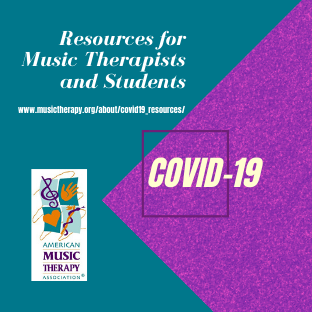
Masking and Vocal Health
Many thanks to Seattle area music therapist, Kaylee Allen Tilton, for sharing her quick tips and a related infographic on vocal health and masking.
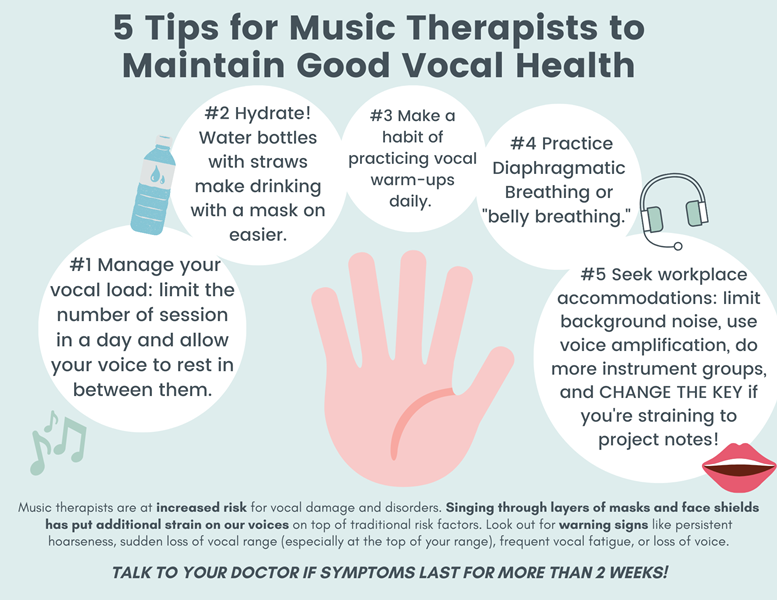
5 Tipes for Music Therapists to Maintain Good Vocal Health
#1 Manage vocal load: limit the number of session in a day and allow your voice to rest in between them.
#2 Hydrate! Water bottles with straws make drinking with a mask on easier.
#3 Make a habit of practicing vocal warm ups daily.
#4 Practice Diaphragmatic Breathing or "belly breathing."
#5 Seek workplace accommodations: limit background noise, use voice amplification, do more instrument groups, and CHANGE THE KEY if you're straining to project notes!
Music therapists are at increased risk for vocal damang and disorders. Singing through layers of masks and face shields has put additional strain on our voices on top of traditional risk factors. Look out for warning signs like persistent hoarseness, sudden loss of vocai range (especially at the top of your range), frequent vocal fatigure, or loss of voice.
Talk to your doctor if symptoms last for more than 2 weeks!
Vocal Health and Effective Communications While Masked - A Sampling of Selected References for Music Therapists
This page, by the American Speech-Language-Hearing Association, discusses how masks interfere with communication, offers tips for wearing masks with hearing aids or cochlear implants, and provides suggestions on speaking with a mask while maintaining social distancing.
Boyle, S. (2018). Musicianship in music therapy (voice section). In A. Clair, A. Knight, & B. LaGasse (Eds.), Music therapy: An introduction to the profession (pp. 72-76). American Music Therapy Association.
Boyle, S.R. & Engen, R.L. (2008). Are music therapists at risk for voice problems? Raising awareness of vocal health issues. Music Therapy Perspectives, 26(1), 46-50.
Gama, R., Castro, M. E., van Lith-Bijl, J. T., & Desuter, G. (2021). Does the wearing of masks change voice and speech parameters?. European Archives of Oto-rhino-laryngology: Official Journal of the European Federation of Oto-Rhino-Laryngological Societies (EUFOS) (affiliated with the German Society for Oto-Rhino-Laryngology - Head and Neck Surgery), 1–8. Advance online publication. https://doi.org/10.1007/s00405-021-07086-9
This literature review aimed to examine the effects of mask wearing on potential effects of masks on voice and speech parameters. Parameters examined included three categories including self-reported effects, acoustic, and aerodynamic effects on voice and speech. The authors concluded mask wearing appears to increase a perception of vocal effort, tends to alter vocal tract length and speech articulatory movements. This, in turn, results in spectral sound changes, impaired communication and perception. The authors noted research on the effect of masks on voice aerodynamics are lacking and continued research is needed to better understand long-term effects of face masks on the potential for voice pathology.
Manternach, J. N., & Schloneger, M. J. (2021). Vocal dose of preservice music therapists, preservice music teachers, and other undergraduate students. Journal of Voice, 35(2), 328.e1–328.e10. https://doi.org/10.1016/j.jvoice.2019.09.008
The aim of this study was to explore voice use amongst preservice college students, including music therapists. Participant survey data and voice dosimeter data (phonation duration and percentage, amplitude, frequencies, and distance dose) were analyzed among preservice music therapists, preservice music teachers, and other university students subjects over seven days. The authors concluded, in particular, that “preservice music therapists and preservice music teachers may experience extreme increases in vocal load when they enter the field.”
Ribeiro, V. V., Dassie-Leite, A. P., Pereira, E. C., Santos, A., Martins, P., & Irineu, R. A. (2020). Effect of Wearing a Face Mask on Vocal Self-Perception during a Pandemic. Journal of voice : Official Journal of the Voice Foundation, S0892-1997(20)30356-8. Advance online publication. https://doi.org/10.1016/j.jvoice.2020.09.006
The objective of this study (observational descriptive cross-sectional design) was to analyze the vocal self-perception of individuals who wore face masks for essential activities and those who wore them for professional and essential activities during the pandemic. Conducted in Brazil (n=468), the authors found masks increased the perception of “vocal effort, difficulty in speech intelligibility, auditory feedback, and difficulty in coordinating speech and breathing” among all subjects. Persons who wore face masks for professional and essential activities had a greater perception of “vocal fatigue and discomfort, vocal effort, difficulties in speech intelligibility, and in coordinating speech and breathing.”
Schwartz, E., Boyle, S., & Engen, R. (2018). Functional voice skills for music therapists. Braunfels, TX: Barcelona. ISBN : 9781945411328 E-ISBN : 9781945411335
Update: Omicron Variant Symptoms
The ZOE COVID Symptom Study out of the UK uses a patient-reported app to identify COVID symptoms from a large population sample. Based on their analysis of COVID patients over time, the top five symptoms common to both Delta and Omicron variants are:
- runny nose
- headache
- fatigue (mild or severe)
- sneezing
- sore throat
Their analysis found no clear difference in the symptom profile of Delta and Omicron, but only 50% of people experienced the classic three symptoms of fever, cough, or loss of sense of smell or taste. Over time, as Omicron becomes dominant, loss of smell and taste become much less common in presentation among patients. This symptom was in the top 10 symptoms earlier in 2021, and now it's ranking at 17, with only 20% experiencing it.
While data are still emerging in the US, there are some indications that vaccinated individuals experience less breathing difficulties with Omicron. When breathing issues do arise, they may be more like a bronchitis type symptom and not pneumonia with acute shortness of breath.*
Business Insider created a side by side chart comparing variant symptoms based on the ZOE COVID Symptom Study data.
*Note from AMTA COVID Task Force: While there are always exceptions and variations to respiratory symptom presentations, it is advisable not to ignore symptoms. Conducting testing, follow isolation protocols, and treat/seek care promptly.
Annotated References/Sources
Bendix, , A. & Gal, S. (January 14, 2022). 2 charts show how Omicron symptoms differ from Delta and past coronavirus variants. Business Insider.
Meo, S. A., Meo, A. S., Al-Jassir, F. F., & Klonoff, D. C. (2021). Omicron SARS-CoV-2 new variant: global prevalence and biological and clinical characteristics. European review for medical and pharmacological sciences, 25(24), 8012–8018. https://doi.org/10.26355/eurrev_202112_27652
“The major clinical manifestations in this new variant are those of a "mild infection", including headache, body ache, muscles ache, cough, fever, generalized myalgia, and severe fatigue.”
ZOE®. (January 18, 2022). What are the symptoms of Omicron?
Masking Update
Masks, depending on their fit and material(s), allow different levels of inward and outward leakage. According to the American Conference of Governmental Industrial Hygienists (ACGIH) (2022):
- INWARD LEAKAGE = Percentage of particles entering the facepiece to be inhaled by a receiver
- OUTWARD LEAKAGE = Percentage of particles exhaled by a source exiting the facepiece
The time to an infectious dose of COVID-19 varies by mask type, fit, and whether all parties are masked. For a more detailed graphic see ACGIH’s Fact Sheet on the topic.
No mask -----------> Cloth mask -----------> Surgical mask -----------> N95(FFR10%) -----------> N95(ffr1%)
Least Protection --------------------------------------------------------------------------------------------------> Highest Protection
Because Omicron variants spread more readily to others compared to the original (native) virus and Delta variant, it is important for therapists to follow health facility policies regarding mask type. Use of higher grade, NIOSH rated/approved masks is recommended while avoiding unbranded masks. (See NIOSH site for a list of recommended vs. counterfeit vendors/products.) At the time of this update, the CDC is in the process of updating their mask guidance. While KN95 masks were given emergency use authorization for use in health settings, authorization was revoked when supplies improved for NIOSH approved N95 masks; however, the FDA’s list of emergency use masks may still be useful for therapists to consider in permitted settings.
N95
(surgical grade and nonsurgical grade models)
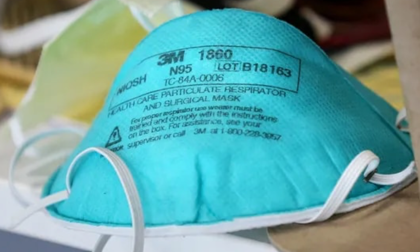
|
KN95
(manufactured in China, ear loops)
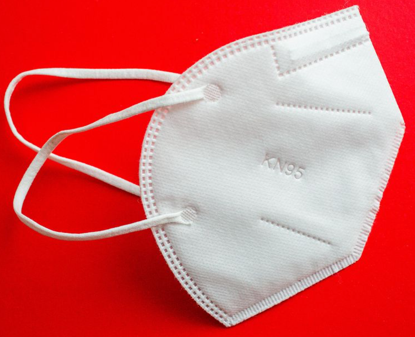
|
Kf94
(manufactured in ROK, large air pocket, ear loops)
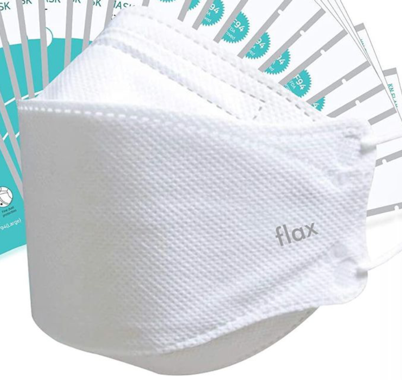
|
Dn95
(manufactured in US, multilayer mask, available in colors, not NIOSH approved)

|
COVID-19 and Surface (Fomite) Transmission Risks

Fomite transmission risk is lower than transmission via respiratory droplets; however, emerging findings may point to increased survival time on skin and plastic surfaces for Omicron variant compared to Delta variant and the native virus. Image source: CDC
Music Therapy colleagues: Keep up high quality cleaning/disinfection protocols
- Hand washing and Sanitizer.
- Surface Cleaning.
Know high touch surfaces for your practice environments:
- Instruments.
- Carts.
- Door & cabinet handles.
- Elevator buttons.
- Tablets, computer, cell phone.
- Light switches.
Other:
- Car – Steering wheel and dashboard.
- Gas station pump.
- Store carts & baskets.
- Cash, credit/debit cards.
- Restroom and breakroom surfaces.
References
Centers for Disease Control and Prevention. (April 5, 2021). Science Brief: SARS-CoV-2 and Surface (Fomite) Transmission for Indoor Community Environments. https://www.cdc.gov/coronavirus/2019-ncov/more/science-and-research/surface-transmission.html
Hirose, R., Itoh, Y., Ikegaya, H., Miyazaki, H., Watanabe, N., Yoshida, T., Bandou, R., Daidoji, T., & Nakaya, T. (2022). Differences in environmental stability among SARS-CoV-2 variants of concern: Omicron has higher stability. bioRxiv. Doi: https://doi.org/10.1101/2022.01.18.476607. https://www.biorxiv.org/content/10.1101/2022.01.18.476607v1
###
Back